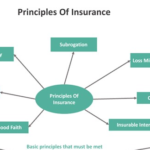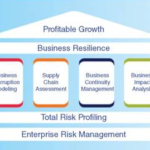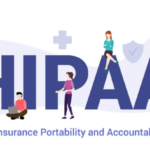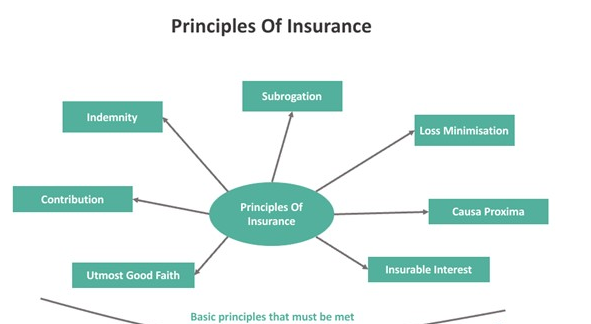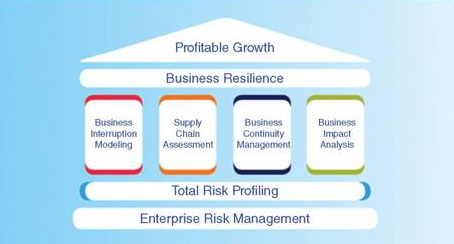Road accidents are a leading cause of injury and death worldwide, but many of them are preventable with the right knowledge and habits. Whether you’re an experienced driver or someone who’s just started driving, understanding the various factors that contribute to accidents—and how to mitigate those risks—is crucial for staying safe on the road. In this comprehensive guide, we’ll dive into detailed tips and strategies that can help you avoid accidents and navigate the roads safely.
1. Stay Alert and Avoid Distractions
One of the most common causes of road accidents is distracted driving. Distractions take your focus off the road and prevent you from reacting quickly to hazards. While distractions can come in many forms, the most dangerous ones are those that involve using electronic devices, such as texting, calling, or browsing the internet while driving.
Why Distractions Are Dangerous:
- Delayed Reaction Time: It takes time to refocus on the road if your attention is diverted. This can make it impossible to react quickly when a sudden hazard appears (such as a car stopping abruptly or a pedestrian crossing unexpectedly).
- Cognitive Load: Talking on the phone or interacting with the radio or GPS increases your cognitive load, making it harder to process important information from your environment.
- Visual Distraction: Looking away from the road for even a few seconds can cause you to miss critical visual cues that could prevent an accident.
Tips to Stay Focused:
- Use Hands-Free Technology: If you must make a call, use a hands-free device to keep both hands on the wheel. Many modern vehicles are equipped with Bluetooth systems that allow you to make calls via voice command.
- Avoid Texting and Other Digital Distractions: Texting or browsing your phone while driving is illegal in many places for a reason. The best way to avoid temptation is to put your phone on “Do Not Disturb” mode while driving.
- Set GPS Before Driving: Plan your route before you start driving so you don’t have to adjust your GPS while on the road.
- Stay Alert: Take breaks if you feel fatigued or if you find your attention waning.
Key Takeaway:
Distractions, especially those from electronic devices, impair your ability to react to potential hazards. Keep your focus on the road at all times.
2. Follow Speed Limits and Adjust to Road Conditions
Driving above the speed limit is a leading cause of accidents, especially in adverse conditions. While speed limits are designed to provide guidance for safe driving under normal conditions, there are times when you must slow down even further to account for other variables.
Why Speeding Is Dangerous:
- Reduced Reaction Time: The faster you go, the less time you have to react to an unexpected situation.
- Longer Stopping Distances: The higher your speed, the longer it takes to stop. At higher speeds, even slight braking can lead to loss of control.
- Increased Severity of Crashes: In the event of a collision, the impact at higher speeds is much more severe, leading to more significant injuries.
When to Slow Down:
- Bad Weather: In rain, snow, fog, or ice, it’s essential to reduce your speed well below the posted limit. Roads become slippery, visibility is reduced, and stopping distances are extended in these conditions.
- Construction Zones: Construction areas often have uneven roads, narrow lanes, or sudden stops. Always reduce your speed to avoid accidents in these zones.
- Heavy Traffic: In congested areas, it’s crucial to adjust your speed to the flow of traffic, regardless of the speed limit. Even if you’re traveling within the posted speed limit, stop-and-go traffic can make driving dangerous.
- Pedestrian Zones or School Areas: These areas may have children or pedestrians walking around, so reduce your speed and stay vigilant.
Key Takeaway:
Speed limits are the maximum safe speeds under ideal conditions. Always reduce your speed according to road conditions, traffic, and weather.
3. Maintain a Safe Following Distance
Tailgating, or following another vehicle too closely, is a common yet highly dangerous driving behavior. It significantly reduces your ability to react if the car in front of you suddenly stops or slows down. Maintaining a safe following distance ensures you have ample time to react and stop in case of an emergency.
Why Following Distance Matters:
- Reaction Time: The faster you’re driving, the longer it takes to come to a full stop. Keeping a safe distance gives you more time to brake or take evasive action if the vehicle in front of you makes a sudden move.
- Safe Stopping Distance: In normal conditions, the recommended following distance is at least two to three seconds behind the car in front of you. In poor weather conditions or at high speeds, you should increase this distance to four or more seconds.
How to Measure Safe Following Distance:
- The “Three-Second Rule”: Pick a stationary object on the road, like a sign or tree. When the car in front of you passes that object, start counting “one, two, three.” If you reach the same object before you finish counting, you’re too close. Increase the distance between you and the car in front of you.
- In Adverse Conditions: Increase your following distance to five seconds or more in rain, fog, or icy conditions, as stopping distances are greatly lengthened.
Key Takeaway:
Tailgating limits your ability to react to changes in traffic. A proper following distance is key to safe driving.
4. Use Turn Signals and Be Predictable
Turn signals are one of the most basic tools in driving, yet they are often neglected. Properly signaling your intentions is crucial for maintaining safety and helping other drivers anticipate your actions.
Why Signaling Is Important:
- Clear Communication: Signaling tells other drivers what you plan to do, allowing them to adjust their behavior accordingly.
- Preventing Accidents: Sudden lane changes or turns without signaling can cause collisions, as other drivers may not expect you to make such moves.
Best Practices:
- Signal Early: Signal at least 100 feet before turning or changing lanes to give other drivers ample time to react.
- Use Signals When Merging: Always signal when entering a highway or merging with other traffic. This is especially important on busy roads, where other drivers may not be able to predict your movements.
- Check Your Blind Spots: Before signaling and changing lanes, always check your mirrors and blind spots to ensure there is enough room.
Key Takeaway:
Turn signals and clear communication with other drivers can prevent accidents caused by misunderstandings and unexpected maneuvers.
5. Observe and Follow Road Signs and Traffic Signals
Road signs, signals, and markings are designed to guide drivers and ensure traffic flows smoothly and safely. Ignoring or misinterpreting them can result in serious accidents, especially at intersections.
Why Obeying Traffic Signs Is Critical:
- Right-of-Way: Failing to stop at a stop sign or ignoring a yield sign can lead to dangerous T-bone or side-impact crashes.
- Controlled Intersections: Traffic lights, stop signs, and yield signs manage the flow of traffic and prevent accidents at intersections, where many crashes occur.
Common Road Signs and Signals to Watch For:
- Red Lights: Always come to a complete stop when approaching a red traffic light. Never try to “beat” the light, as cross-traffic may already be moving.
- Stop Signs: A full stop is required. Look both ways before proceeding, even if there seems to be no traffic.
- Yield Signs: When you see a yield sign, slow down and be prepared to stop if there is oncoming traffic or pedestrians.
Key Takeaway:
Road signs and traffic signals are there for a reason. Ignoring them or misunderstanding them can lead to collisions, especially at intersections.
6. Adjust to Weather Conditions
Driving in inclement weather presents a unique set of challenges. Rain, snow, ice, fog, and even excessive heat can compromise road conditions and reduce your visibility. It’s critical to adjust your driving habits to match the weather.
How Weather Affects Driving:
- Rain: Water reduces tire traction, making it easy to hydroplane. Keep your speed lower than the posted speed limit, and increase your following distance.
- Snow and Ice: These conditions are particularly dangerous because they reduce tire grip and make it more difficult to stop or steer. Use snow tires, slow down, and avoid sudden movements.
- Fog: Reduced visibility requires that you slow down and use low-beam headlights. High beams reflect off the fog, making it even harder to see.
- Wind: High winds can make it difficult to control your vehicle, especially if you’re driving a larger vehicle like a truck or SUV. Keep a firm grip on the wheel and reduce your speed.
Key Takeaway:
Adjusting your driving speed and behavior to the weather conditions ensures that you maintain control and visibility in adverse conditions.
7. Check Your Vehicle Regularly
A well-maintained car is crucial for safe driving. Regular vehicle inspections can prevent breakdowns and ensure that your car is operating as it should, especially in an emergency.
Essential Vehicle Maintenance Checks:
- Tires: Check tire pressure regularly. Under-inflated tires increase the risk of a blowout and reduce fuel efficiency. Ensure that your tires have enough tread to grip the road, especially in wet or icy conditions.
- Brakes: Worn brake pads or low brake fluid can drastically increase stopping distances and make it harder to stop in time.
- Lights: Check that all lights (headlights, taillights, brake lights,
8. Avoid Driving Under the Influence
Driving under the influence of alcohol, drugs, or medications is not only illegal, but it also impairs your reaction time, judgment, and coordination. Never drive if you are intoxicated, fatigued, or under the influence of any substance that affects your ability to drive safely.
- Use a designated driver, public transportation, or ridesharing services if you plan to drink.
- If you’re taking prescription medication, ask your doctor about any side effects that might impair driving.
- Always get enough rest before driving to avoid fatigue-related accidents.
Key Point:
Never drive under the influence of alcohol or drugs. Even small amounts can impair your ability to make quick decisions and react appropriately.
9. Practice Defensive Driving
Defensive driving means staying aware of your surroundings and anticipating what other drivers might do. It’s not enough to drive carefully yourself—you also need to be prepared for others’ mistakes.
- Always expect the unexpected, such as someone running a red light or merging without signaling.
- Be cautious in areas with high pedestrian traffic, such as school zones.
- Watch for erratic driving behavior from other vehicles and give them space.
Key Point:
Defensive driving involves being proactive and prepared for potential hazards, even if you’re not directly at fault.
10. Stay Calm and Don’t Aggressively Engage with Other Drivers
Road rage can lead to dangerous confrontations and accidents. If another driver cuts you off, tailgates, or behaves aggressively, it’s best to stay calm and avoid engaging with them.
- Don’t retaliate or make rude gestures.
- Keep a safe distance and focus on your own driving.
- If you feel threatened, consider reporting aggressive drivers to the authorities.
Key Point:
Road rage can escalate quickly. Stay calm, avoid confrontation, and prioritize safety.

Conclusion
Preventing road accidents requires a combination of safe driving habits, vehicle maintenance, and awareness of road conditions. By staying alert, driving defensively, and following the rules of the road, you can reduce the risk of an accident and protect yourself and others. Safe driving isn’t just about avoiding collisions—it’s about making the roads safer for everyone.
Remember, a few seconds of attention or caution can save a life. Drive safely!

